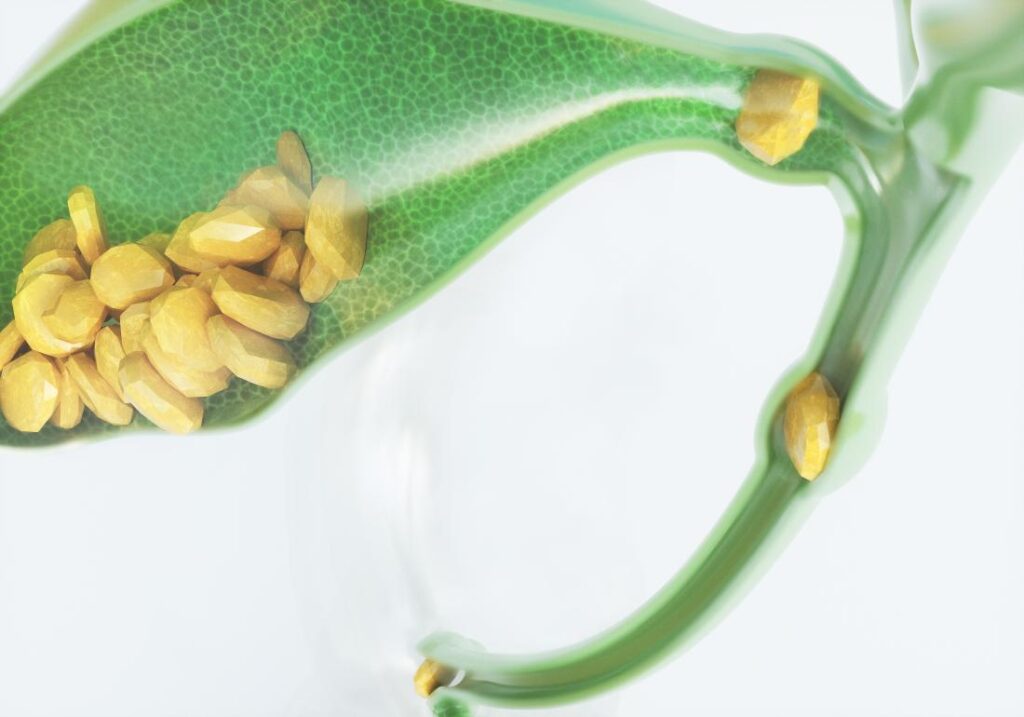Gallstone disease is a common condition that affects a significant portion of the Indian population. It occurs when solid particles, called gallstones, form in the gallbladder or bile ducts. While gallstones can be asymptomatic, they can cause severe pain and other complications in some cases. In this blog, we will discuss the causes, symptoms, diagnosis, treatment, and prevention of gallstone disease for the Indian audience.

Causes
The formation of gallstones occurs when there is an imbalance in the substances that make up bile, a digestive fluid produced by the liver and stored in the gallbladder. The exact cause of this imbalance is unknown, but factors that increase the risk of gallstone formation include:
- Obesity: People who are overweight or obese are at a higher risk of developing gallstones.
- Rapid weight loss: Losing weight quickly, such as through crash diets or bariatric surgery, can increase the risk of gallstone formation.
- Family history: Gallstones tend to run in families, suggesting a genetic component to the disease.
- Age: The risk of developing gallstones increases with age, especially after the age of 40.
- Gender: Women are more likely to develop gallstones than men, possibly due to the effects of estrogen on the gallbladder.
Symptoms
Most people with gallstones do not experience any symptoms. However, if a gallstone becomes lodged in a bile duct, it can cause severe pain and other symptoms, including:
- Sudden and intense pain in the upper right abdomen, which may radiate to the back or shoulder blade
- Nausea and vomiting
- Fever and chills
- Jaundice, which is characterized by yellowing of the skin and eyes
Diagnosis
To diagnose gallstone disease, your doctor may order one or more of the following tests:
- Abdominal ultrasound: This imaging test uses sound waves to create pictures of the organs in the abdomen, including the gallbladder and bile ducts.
- CT scan: This imaging test uses X-rays to create detailed pictures of the organs in the abdomen.
- Endoscopic retrograde cholangiopancreatography (ERCP): This procedure uses a flexible tube with a camera on the end to visualize the bile ducts and remove gallstones.
Treatment
Treatment for gallstone disease depends on the severity of symptoms and the presence of complications. In many cases, gallstones do not require treatment and will pass on their own. However, if you experience severe pain or other symptoms, your doctor may recommend one or more of the following treatments:
- Pain relief: Over-the-counter pain relievers, such as acetaminophen or ibuprofen, can help alleviate pain caused by gallstones.
- Medications: Certain medications can dissolve gallstones or prevent them from forming.
- Surgery: If you have severe or recurrent symptoms, your doctor may recommend surgery to remove the gallbladder, a procedure known as a cholecystectomy.
Prevention
While it is not always possible to prevent gallstone disease, there are several steps you can take to reduce your risk:
- Maintain a healthy weight: Being overweight or obese increases the risk of gallstone formation.
- Eat a healthy diet: Eating a diet rich in fruits, vegetables, and whole grains and low in saturated fats and cholesterol can help prevent gallstones.
- Exercise regularly: Regular exercise can help prevent obesity and reduce the risk of gallstones.
- Lose weight gradually: Losing weight gradually, rather than quickly, can reduce the risk of gallstone formation.
Conclusion
Gallstone disease is a common condition that affects a significant portion of the Indian population. While most people with gallstones do not experience symptoms, the condition can cause severe pain and other complications in some cases. Treatment for gallstone

